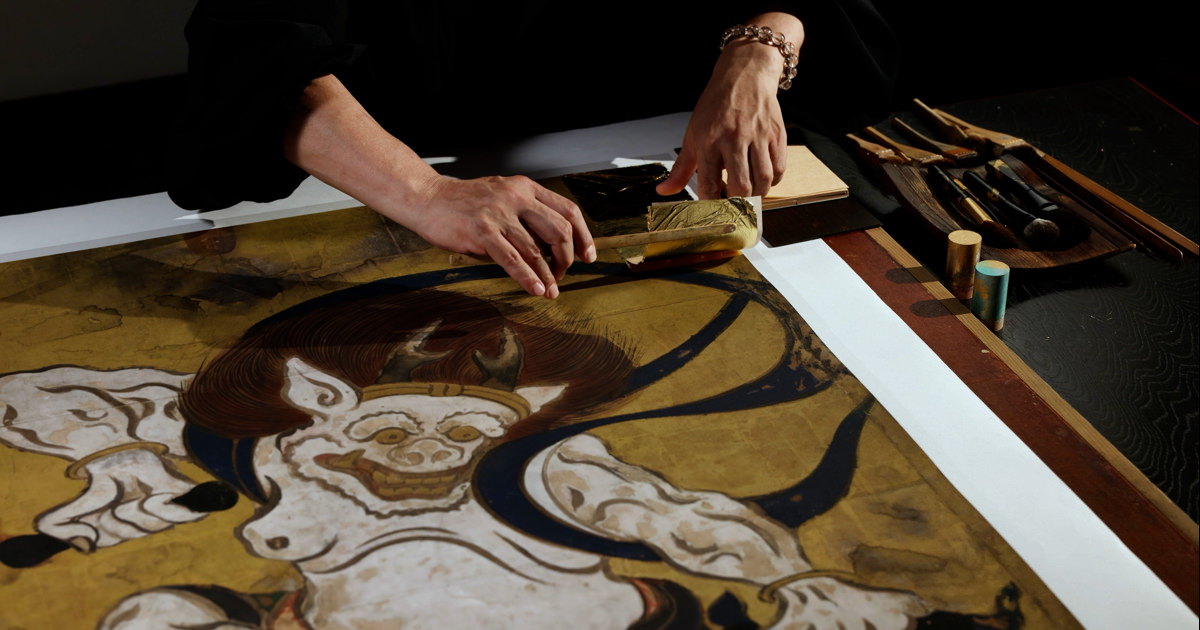Landscape
High-resolution facsimiles
- Material
- printed on washi paper
- Period of creation
- Tsuzuri Project
Stage 5 2011–2012
Stage 6 2012–2013 - Recipient
- Kenninji Temple
Original
- Cultural property designation
- Important Cultural Property
- Artist
- Kaiho Yusho
- Historical era
- Azuchi-Momoyama (16th century)
- Material
- ink on washi paper
- Medium
- Eight sliding doors
- Size
-
East 4 panels : H199.0 × W187.0 cm
North 4 panels : H198.0 × W138.0 cm - Collection
- Kenninji Temple
Description
Among the 50 panels of the Abbot‘s Chambers at Kenninji Temple painted by Kaiho Yusho, eight sliding panels decorate the Danna-no-ma room involved in a revival of Kenninji Temple in the early modern era.
The four sliding panels on the east side depict a water scene and the Rokaku waterfall, while the four sliding panels on the north side portray a pavilion, water scene, and waterfall.
These eight panels titled ""Landscapes"" differ from ""Dragon and Clouds"" (Rei-no-ma Room), ""Flowers and Birds"" (Shoin-no-ma Room), and ""Four Accomplishments"" (Ihatsu-no-ma Room); these landscape panels feature clearly drawn details and are unlike the depictions of people dressed in the billowing garments seen in the inner room and which can be viewed in every room of the large abbot‘s chamber of Kenninji Temple. Clever accents of dark ink are added to pale ink in a cursive style of splashed ink (expressed through smudging and fading of the ink), which are believed to have been taught by Gyokukan. This style of painting has been sublimated into the Yusho style, with the very extensive empty space also being effective.
*In order to view videos, it is necessary to consent to the use of cookies by our website.
If the videos are not displayed, please click the “Cookie Settings” and accept cookies.




